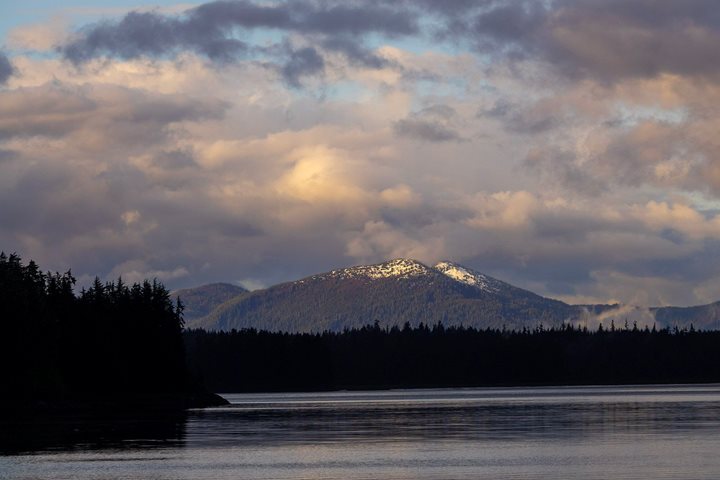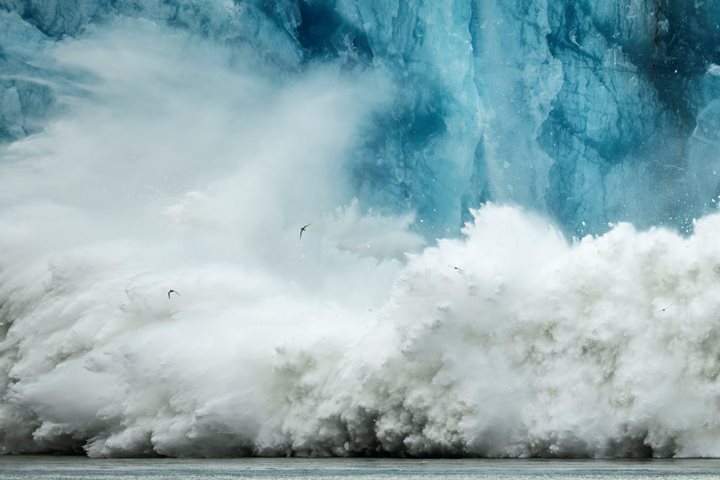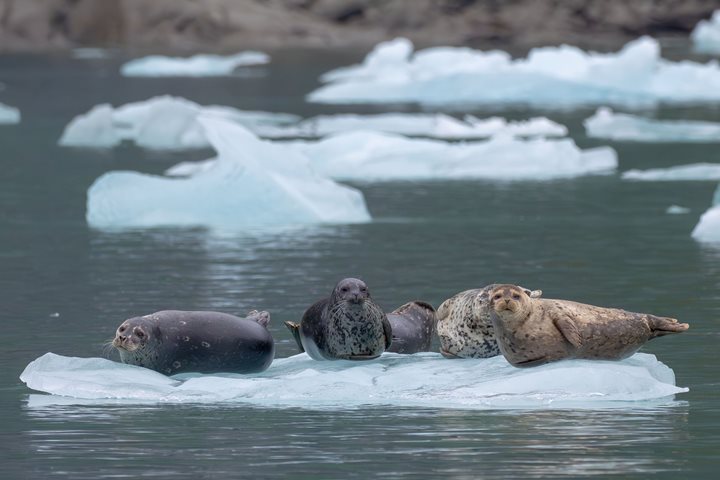Today we woke south of Juneau, near the mouth of Holkham Bay, where the terminal moraine of a glacier lies. Terminal moraines are where a glacier has continually pushed sediment downhill into a single place. This creates a shallow bar where we have to time the tides correctly to enter the bay. The depth can be 1000 feet, then suddenly just 50 feet over the top of the bar, making the currents challenging to navigate. We then cruised through the morning all the way to the back of Tracy Arm fjord. After breakfast, we took Zodiacs closer to South Sawyer Glacier where we witnessed calving (big chunks of ice breaking off) and shooters (ice that has broken off underneath the water and “shoots” to the surface.) There were many harbor seals, gulls, and Arctic terns. We also drove around big blue icebergs that must have broken off recently, because an hour later it looked very different due to melting. Later we had lunch, and the ship repositioned to a small beach next to a waterfall. We then kayaked off that beach for the rest of the afternoon. The weather was off and on rain, just like it should be in Southeast Alaska. We had a lovely dinner, which was followed by an informative talk about iPhone photography by our certified photo instructor Alex. Being able to get close to glaciers and kayak with small chunks of ice in the water was a treat!
- Daily Expedition Reports
- 10 Aug 2023
Tracy Arm Fjord , 8/10/2023, National Geographic Sea Lion
- Aboard the National Geographic Sea Lion
- Alaska
Lauren Boye, Undersea Specialist
Lauren is a steward of the ocean and is happy as long as she is near it. She has many years of experience working on and in the ocean. SCUBA diving is her favorite hobby and fish are her best friends. She also loves spending time on boats and watchin...
Read MoreShare Report
Alaska Escape: LeConte Bay, Wrangell and Misty Fjords
VIEW ITINERARYRelated Reports
5/29/2025
Read
National Geographic Sea Bird
Endicott Arm
Dawes Glacier, located at the head of Endicott Arm in Southeast Alaska, is an active tidewater glacier in the remote Tracy Arm-Fords Terror Wilderness Area. Reaching the glacier requires a 30-mile journey through a narrow fjord lined with sheer rock walls rising over 3,000 feet. These cliffs are veined with waterfalls and often blanketed in mist. Throughout the fjord, remnants of the glacier float in the form of icebergs. The glacier feeds cold, silty meltwater into the fjord, giving the water a distinctive milky-green hue and supporting a rich marine food web. Harbor seals were hauled out on ice floes near the glacier. Gulls and Arctic terns were actively feeding, likely drawn by the small fish and plankton concentrated by the glacial outflow. The glacier calved several times, hurling large chunks of ice across the water’s surface, sending the birds fleeing. The sound of the ice hitting the water echoed off the steep rock walls that rise thousands of feet on either side.
5/27/2025
Read
National Geographic Sea Bird
Dawes Glacier in Endicott Arm
We could not have asked for a better way to end the expedition. Our last day was amazing! Visiting Dawes Glacier in Endicott Arm was a highlight with its crystal-blue ice and resting harbor seals floating by on the ice. In the evening, we even got to see a couple of humpback whales off the bow of the ship. We ended the day by watching images of the beautiful moments created on our expedition during the famed guest photo slideshow.







